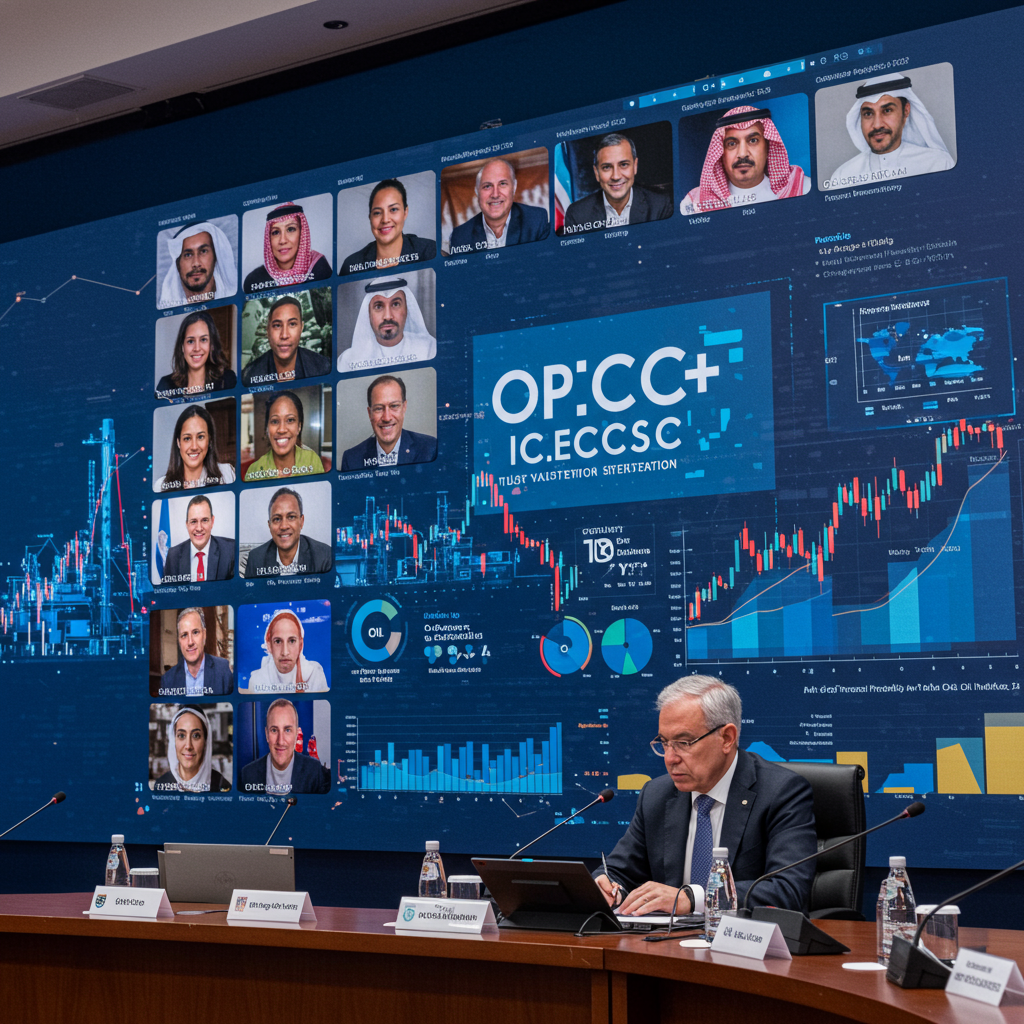Eight key members of the OPEC+ alliance have announced a significant increase in their collective oil production, adding 548,000 barrels per day to global supply starting in August. This move, decided during a virtual meeting, is poised to influence energy markets and potentially impact fuel prices for consumers later this year. The decision reflects the group’s assessment of the global economy and current oil inventory levels.
This August production hike is being implemented by a specific subset of the broader 22-country OPEC+ alliance. The nations participating are Saudi Arabia, Russia, Iraq, the United Arab Emirates, Kuwait, Kazakhstan, Algeria, and Oman. Their collective output adjustment represents approximately half a percent (0.5%) of total worldwide crude oil production.
Why the Production Boost Now?
OPEC+ cited “a steady global economic outlook” and “healthy market fundamentals” as the primary drivers behind the decision to increase supply. Specifically, the alliance pointed to low oil inventories as a key factor supporting the need for more production.
The timing aligns with the busy summer driving season and increased energy demand globally, particularly for air conditioning during widespread heat waves. While this surge in demand exists, research indicates that global oil supply might still outpace demand in the latter half of the year. This delicate balance influences how the market reacts to additional barrels.
The Broader OPEC+ Strategy in Context
The August increase aligns with a larger, pre-existing plan decided upon in December. That agreement outlined a gradual return of 2.2 million barrels per day to the market over an 18-month period, commencing in April and scheduled to conclude in the fall of 2026.
Implementation of this broader plan had previously faced delays. Weaker-than-expected global demand and robust production from countries outside the OPEC+ alliance were cited as reasons for the earlier cautious approach. The group has emphasized the flexibility of this plan, stating that future increases can be “paused or reversed” if market conditions change, allowing them to adapt and support stability. This boost follows a previous increase of 411,000 barrels per day in April.
Key Players and Production Targets
Saudi Arabia holds significant sway within OPEC+ as the leading member of the original OPEC cartel. Russia serves as the primary non-OPEC partner in the alliance. These two nations are critical to the group’s decisions and overall output levels.
For August, Saudi Arabia’s targeted production is noted at 9.8 million barrels per day. Russia follows with a target of 9.3 million barrels per day, and Iraq is third among the mentioned members at 4.1 million barrels per day. It’s worth noting, for perspective, that the United States, which is not part of OPEC+, is a larger producer than any individual member, with the U.S. Energy Information Administration reporting average crude oil production around 13.4 million barrels per day in August 2024.
Market Implications and Challenges
The decision to increase production by 548,000 barrels per day exceeded the expectations of many analysts, who had anticipated a more modest increase of 411,000 barrels per day, consistent with previous months’ increments. This larger-than-expected boost has led some experts, like Jorge Leon of Rystad Energy, to suggest it signals a potential strategic pivot towards prioritizing market share for the alliance members.
Questions remain about whether global demand will be sufficient to fully absorb the increased supply without significantly impacting prices. While oil prices have recently stabilized in a range considered healthy for producers ($65-$70 per barrel), the forecast for a supply surplus in the second half of the year adds complexity.
Adding to the market dynamic, there are reports of some OPEC+ members, such as Kazakhstan and Iraq, having overproduced relative to their individual quotas. The approval of a higher collective target by influential members like Saudi Arabia could potentially serve as a mechanism to bring these non-compliant members back into line or pressure them in a lower price environment. Recent data suggests the alliance’s actual production increase in May was less than half the stated quota increase, indicating challenges in meeting higher output targets.
Geopolitical Considerations
While the stated reasons for the increase focus on economic fundamentals and inventories, the broader geopolitical landscape always looms large in the oil market. A recent period of significant price volatility saw oil spike above $80 a barrel during a brief conflict between Israel and Iran, driven by concerns over disruptions to supply routes like the Strait of Hormuz, through which a large portion of the world’s oil passes.
Although a fragile ceasefire is now in place in the Middle East, ongoing risks in regions like Ukraine and Libya continue to add uncertainty to market dynamics. Some analysts have also speculated on potential political motivations behind Saudi Arabia’s willingness to increase output, suggesting it could be partly aimed at accommodating major consuming nations.
Looking Ahead
The decision reflects a notable shift from the output cuts implemented by OPEC+ starting in 2022, which were intended to bolster prices. A subsequent change in policy, notably influenced by Saudi Arabia, initiated the process of gradually increasing production again from May onwards, which contributed to a previous drop in prices.
The future direction of OPEC+ policy will depend heavily on evolving market conditions. The eight nations involved in this specific August boost have already scheduled their next virtual meeting for August 3rd. During this meeting, they are expected to decide on the production levels for September, providing further insight into the alliance’s near-term strategy and outlook.
Frequently Asked Questions
What is the specific oil production increase announced by OPEC+ for August?
Eight key members of the OPEC+ alliance have agreed to increase their collective oil production by 548,000 barrels per day starting in August. This boost comes from Saudi Arabia, Russia, Iraq, UAE, Kuwait, Kazakhstan, Algeria, and Oman, and represents approximately 0.5% of total global crude oil production.
Why did OPEC+ decide to increase oil output at this time?
OPEC+ members stated that the increase is based on “a steady global economic outlook,” “healthy market fundamentals,” and particularly, low oil inventories. The decision also coincides with increased seasonal demand during the summer driving season and heat waves, although some forecasts suggest overall supply may still exceed demand in the second half of the year.
How might this OPEC+ production increase affect oil and gas prices?
Adding 548,000 barrels per day to the market could potentially contribute to lower oil and gas prices, assuming demand doesn’t significantly outpace the increased supply. However, the actual impact depends on several factors, including how much of the targeted increase is actually produced, overall global demand trends, the balance between supply and demand forecasts, geopolitical events, and compliance among OPEC+ members with their quotas.
Conclusion
The decision by eight OPEC+ nations to significantly raise oil production by 548,000 barrels per day in August marks a key development in global energy markets. Driven by assessments of a stable economic outlook and low inventories, this move aligns with the alliance’s broader strategy of gradually returning supply, while maintaining flexibility based on market conditions. As major players like Saudi Arabia and Russia navigate balancing market stability with potentially regaining market share, the coming months, especially the decision at the August 3rd meeting, will be crucial in determining the trajectory of oil supply and prices.
Word Count Check: [Approx 950 words]




